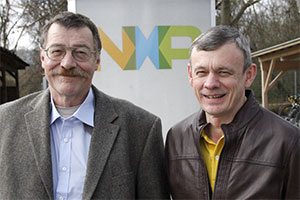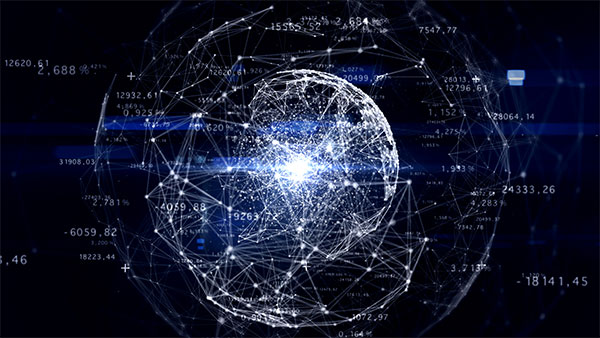An exclusive conversation with the inventors of NFC.
In June 2015, two engineers from NXP Semiconductors, Franz Amtmann and Philippe Maugars, won the much acclaimed and respected EPO European Inventor Award for their creation of Near Field Communication (NFC), now a vital underpinning element of M2M and IoT.
Here, they talk to M2M Now about how the invention of NFC came about, their reaction to how it has developed in the past decade, and their expectations for NFC in the future.
M2M Now: What was the motivation behind the creation of NFC?
Franz: We were working with MIFARE at the time, a pre-cursor communicative technology used to enable quick authentication in cards for banking, transport and ticketing. The goal was to take this to the next step.
The main priority for NFC was to define a low power solution that allowed cards and readers to easily communicate. We also wanted to make an all-encompassing ‘umbrella’ solution, which allowed the integration of additional protocols like FeliCa, a contactless smart card system, and ISO 15693, an international standard for Radio Frequency Identification (RFID) communication, all in the same device.
M2M Now: What was the process of creating NFC and what were the challenges?
Philippe: Despite a few minor hiccups, the invention of the technology itself was surprisingly straightforward. Our biggest challenge was integrating NFC into the market. Since it was a brand new technology, there was no supporting infrastructure like NFC readers for ticketing and payments so consumers couldn’t actually use NFC. That meant manufacturers weren’t willing to pay to integrate the technology into products like bank cards and so on. It was a classic chicken and egg scenario.
M2M Now: Are you surprised at far and wide the use of NFC technology has spread?
Franz: I am, but we shouldn’t forget it took a long time to get here. Lack of infrastructure was a real bottleneck for some time. Now though, the applications are growing rapidly. It’s particularly impressive to see how easily NFC solutions can be designed for even extreme low cost platforms, such as the Raspberry PI.
I also personally appreciate how easy it is to integrate this technology in my own smart home installations. In fact, I believe Philippe’s wife regularly lets him know when dinner is ready through the NFC applications in their own home!
M2M Now: What’s the most innovative use of NFC you’ve seen?
Franz: Being able to unlock and use all of the features of connected cars and smart homes from your phone is fantastic. Supported by likes of the user interface for home appliances and pairing of Bluetooth devices, smartphones will essentially become the ‘remote control’ to our lives. It’s this kind of convenience that will really drive the integration of NFC into everything we do. The commercialisation of NFC will only accelerate as more companies awaken to this.
The possibilities are endless though, and that’s what excites me.
Philippe: The energy harvesting capability of NFC is a great tool for saving battery life. Wireless chips actually use the energy generated from NFC and RFID actions to power up devices. This could be used for powering the lighting on a smartphone for example, reducing the amount of battery-powered applications and improving overall battery life. Some devices could even operate without batteries completely.
M2M Now: What’s in store for the future of NFC?
Franz: Applications for NFC have exploded because it has the key advantage of offering simple and intuitive solutions – both highly desirable requirements in the market. Over the next few years, NFC will no doubt see smartphones become even more central to our everyday lives. As well as the growth of mobile payments through ApplePay, Android Pay, and Samsung Pay, NFC is also likely to become a key facilitator for the IoT.
Philippe: We expect there will be a big focus on how NFC can streamline processes for industry in the next few years.
Using smart factories as an example, NFC allows machines to communicate with each other, ensuring that they can adapt to changes and customisations during the manufacturing process. Tags in products will also allow manufacturers to manage the supply chain, ensuring products have passed all the necessary quality checks and are shipped to the right locations.












